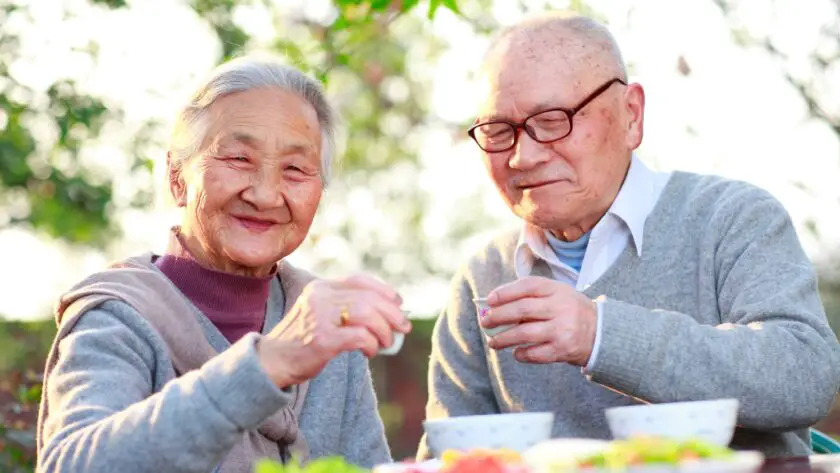Understanding Blue Zones
Blue Zones represent enigmatic regions across the globe where people commonly experience extended lifespans, often reaching 100 years or more while maintaining remarkable health and vitality. These unique pockets—Okinawa (Japan), Sardinia (Italy), Ikaria (Greece), Loma Linda (California), and Nicoya (Costa Rica)—have captivated researchers and health enthusiasts alike for their shared secrets to longevity.
The Five Traits of Blue Zones
- Plant-Based Diet: Central to the longevity in Blue Zones is a predominantly plant-based diet. Inhabitants focus on consuming abundant vegetables, legumes, fruits, and whole grains while keeping meat intake minimal. This dietary pattern is rich in nutrients and antioxidants, promoting overall health. Most cultures eat meat, such as fish, lamb, beef or chicken. Beyond this protein they are eating foods that grow from the earth, not processed foods.
- Regular Physical Activity: In Blue Zones, daily movement is a norm rather than an exception. Whether it’s through traditional activities like walking, gardening, or engaging in low-intensity exercises, constant physical activity is woven into their lifestyles, supporting fitness and well-being.
- Strong Social Connections: Tight-knit communities foster a sense of belonging and support in Blue Zones. Regular social interactions with family, friends, and neighbors contribute significantly to mental health, reducing stress and promoting emotional well-being.
- Sense of Purpose: Blue Zone residents often possess a profound sense of purpose or “ikigai.” This driving force aligns with their values and provides a clear reason to embrace each day, contributing to mental resilience and a positive outlook on life.
- Moderate Caloric Intake: Practicing moderation in eating habits is customary in Blue Zones. Residents often follow cultural norms or traditional practices related to portion control, mindful eating, and avoiding excessive caloric intake.
Religious Beliefs in Blue Zones
Across Greece, California, Italy, and Costa Rica, a striking commonality unites the inhabitants: a shared belief in God or a higher power. While specific religious practices and denominations may vary, the overarching presence of faith is a fundamental aspect of life in these regions.
Greece (Ikaria) – Embracing Orthodox Christianity
Ikaria, Greece, boasts a strong presence of Orthodox Christianity. The religious practices of this community foster a sense of community, communal support, and a framework for coping with life’s challenges.
California (Loma Linda) – Embracing Seventh-day Adventism
Loma Linda, California, is home to a significant Seventh-day Adventist community. The Seventh-day Adventist faith emphasizes holistic health and wellness, promoting a plant-based diet, regular exercise, and a strong sense of community. One interesting fact about Loma Linda, California is that they have more nutritionists per capita in this city than any other city in the US. They really value nutrition.
Italy (Sardinia) – Embracing Catholicism
In Sardinia, Italy, Catholicism is deeply ingrained in the culture and traditions of the community. Catholic beliefs often emphasize a sense of purpose and moral guidance, contributing to a sense of stability and purpose.
Costa Rica (Nicoya) – Embracing Christianity
In Nicoya, Costa Rica, Christianity, predominantly Catholicism and Protestantism, shapes the religious landscape. The faith-based communities foster social connections, providing support and a sense of belonging.
It turns out that four of the five blue zones (80%) primarily all believe in Jesus Christ as their savior and that he is the living God.
While these specific regions of the world choose to believe in a higher power, and God as that higher power they also value health, nutrition, movement, and community as well. It is important to remember that these are all contributing factors to their longevity.
The Nexus Between Faith and Longevity
The intertwining relationship between faith and longevity in Blue Zones has sparked curiosity and intrigue among researchers and health enthusiasts. The belief in a higher power or spirituality is proposed to enhance lifespan in several ways:
- Stress Reduction and Mental Health: Religious practices often offer a structured framework for managing stress. Whether through prayer, meditation, or communal worship, these practices provide solace, reduce cortisol levels, and promote relaxation, contributing to mental well-being.
- Community Engagement and Support: Religious gatherings and communal worship foster strong social connections and a sense of community. This social support network significantly contributes to emotional stability, reducing feelings of isolation and loneliness.
- Healthy Lifestyle Practices: Many religious beliefs advocate for healthy lifestyle practices. Whether through dietary guidelines, abstinence from harmful substances, or encouragement of healthy habits, faith-based teachings often align with practices that promote overall health and well-being.
- Sense of Purpose and Resilience: Belief in a higher power often provides individuals with a profound sense of purpose and direction. This overarching purpose fuels motivation, resilience, and a positive outlook on life, all of which are linked to longevity.
In Conclusion
The enigmatic longevity observed in Blue Zones goes beyond mere lifestyle choices; it delves into the intricate interplay between lifestyle, social connections, mental well-being, and faith. While the five identified traits offer a blueprint for a longer and healthier life, the presence of faith or belief in a higher power emerges as a common thread, offering a profound layer of support in the pursuit of a fulfilling and enduring life. Through the synthesis of lifestyle practices and spiritual beliefs, these Blue Zones showcase the intricate tapestry of factors that contribute to a remarkable and extended human lifespan.





